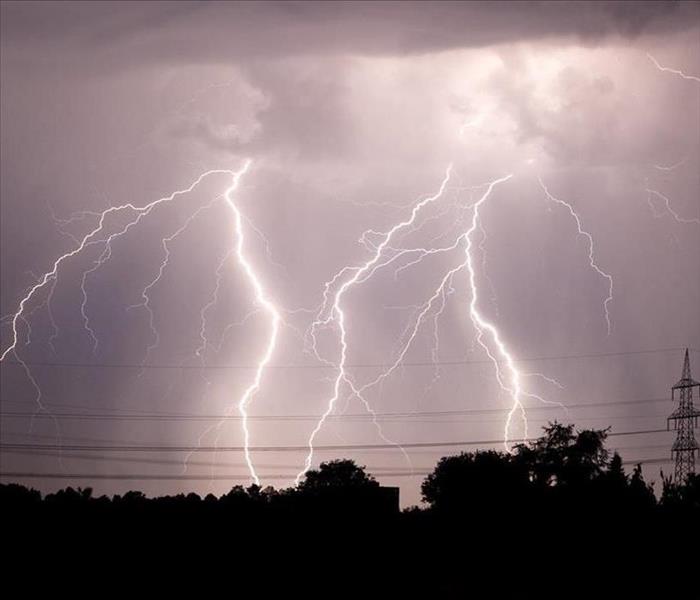Interesting Storm Facts
6/26/2019 (Permalink)
Interesting Facts About Thunderstorms
- The first stage of a thunderstorm, called the developing stage, occurs when a cumulus cloud is pushed upward by air. In the developing stage there is not usually much rain but lightning can be seen.
- The second stage of a thunderstorm, called the mature stage, occurs when the rising warm air reaches warmer air and it spreads out into a 'cap'. This creates frozen water droplets that fall to the earth, melting along the way - unless the updraft is very strong which creates hail. It is during this stage that lightning and thunder and strong winds and rain occur.
- The third stage of a thunderstorm, called the dissipating stage, occurs when a downdraft pushes to the ground essentially cutting off the thunderstorm's inflow.
- The multi-cell cluster thunderstorm is the most common type, characterized by inner mature storms at the center and dissipating storms around the outer edge, and can include weak tornadoes.
- The multi-cell line thunderstorm is characterized by a line of severe thunderstorms that are either in front of or part of a cold front, and can include hail, strong wind, tornadoes and waterspouts.
- The super-cell thunderstorm is characterized by extremely strong wind, powerful updrafts, very severe weather, and strong tornadoes. Most tornadoes originate in this type of storm.
- The severe thunderstorm is characterized by strong winds, funnel clouds and sometimes tornadoes.
- The sound of thunder is made when lightning's heat flash causes the air to expand rapidly, and then shrink rapidly. This violent air disturbance causes the sound of thunder.
- To be classified as a thunderstorm lightning must be present.
- People often hide under trees to escape thunderstorms. It's a dangerous place because trees are often struck by lightning.
- Thunderstorms often occur in warm, humid conditions.
- Some thunderstorms look like cauliflower in the atmosphere.
- The hail produced in some thunderstorms breaks windows, kills wildlife, and even dents cars.
- Lightning isn't the only danger caused by thunderstorms. They can also produce flash floods, strong damaging winds, and fires.
- As soon as thunder is heard it is best to find safe shelter. Thunderstorms can begin very quickly and if you are able to hear the thunder then you are close enough to be struck by the storm's lightning.
If your central Illinois home has been damaged by storms call SERVPRO of Bloomington/Pontiac. 309-827-7500.






 24/7 Emergency Service
24/7 Emergency Service
